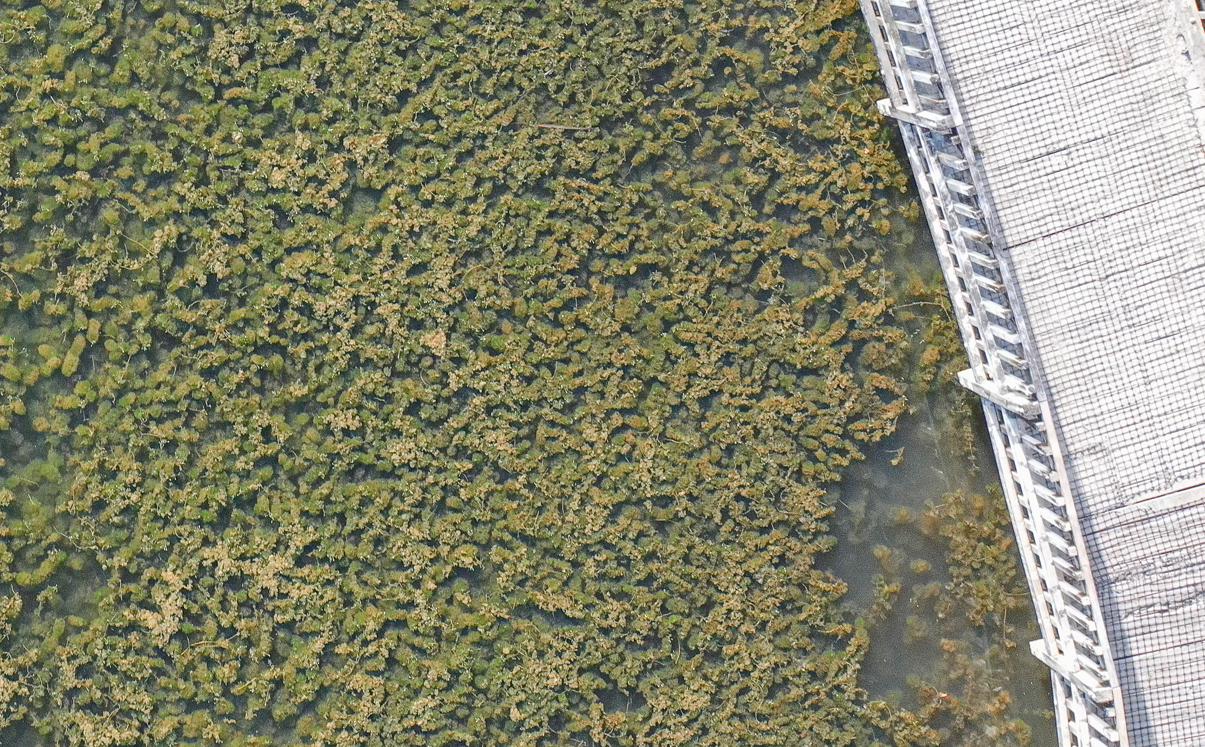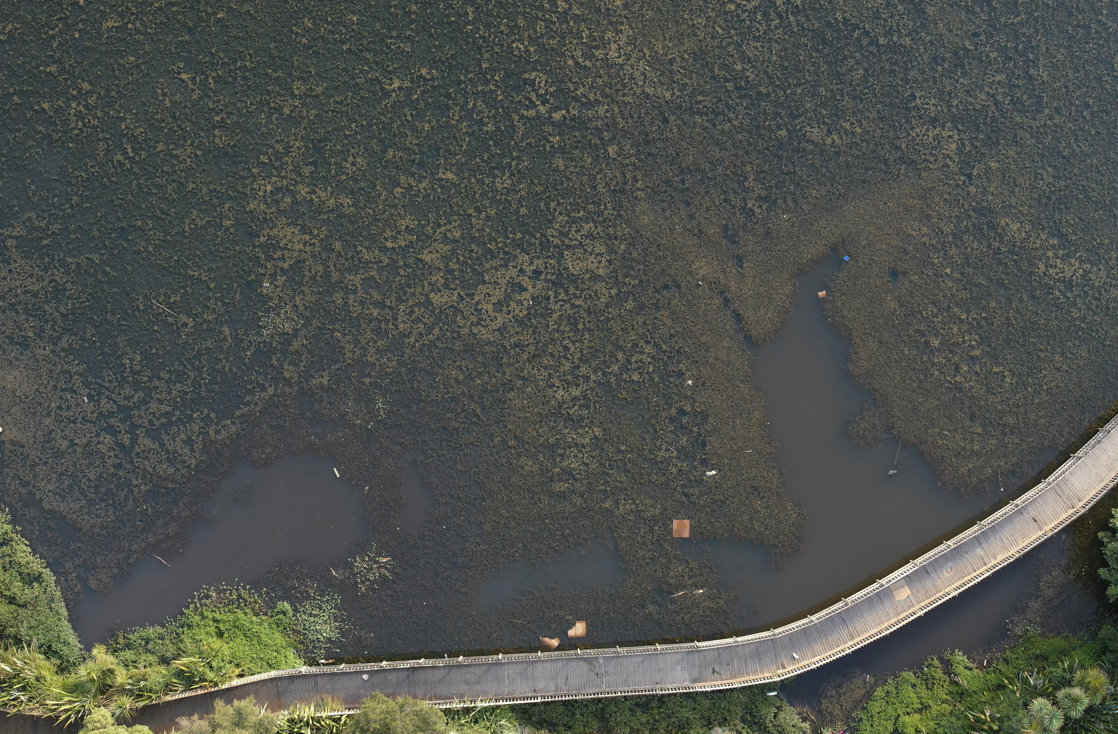How high-resolution drone imagery helped to combat invasive freshwater weeds
Cabomba caroliniana
Biosecurity New Zealand (Ministry for Primary Industries (MPI)), in collaboration with Auckland Council, has launched an eradication effort targeting the invasive aquatic weed, Cabomba caroliniana. This weed has been discovered in stormwater ponds in West Auckland. Globally, there is no approved eradication methodology for this weed.
Auckland Council are unsure of how the aquarium plant found its way into the ponds, but dumping of aquarium matter into the ponds is the likely cause. It has the potential to be a significant environmental pest in New Zealand’s fresh water systems. Cabomba caroliniana is an unwanted organism under the Biosecurity Act 1993.
Auckland Council’s Team Manager for South, Natural Environment Delivery, Ron Matthews noted, “we have undertaken controlled research on different eradication methods, and in doing so discovered that we are likely to need a multipronged approach”. Lab trials recommended two herbicide treatments that have been field trialled over two previous years. This is being modified each season to establish an effective eradication tool. As these were proven to be ineffective, another herbicide was trialled this year but unfortunately also proved to be ineffective against cabomba. An important aspect of these trials is to evaluate and monitor progress and effectiveness.
One main outcome is that collected images will be mapped to show cabomba pest plant percentage cover over time, enabling further analysis to accurately gauge the effectiveness of each herbicide trial.
Recon Ltd was contracted to aerial survey the pond using a drone with a special camera filter approximately 1 week after each treatment over two separate trials. Successful capture of the imagery required calm and clear water conditions so timing the flights was critical. Imagery also needed to be captured at the same time each day to minimise differences caused by inconsistent light levels and reflection through varying sun heights and angles. Still weather and a stand-down period after any significant rain were both necessary.
“The weed is very hard to see at ground level, and given the scale of the area, approx. 1660m2, the use of drones was very effective. The detail of the imagery produced by Recon was extremely high quality, and therefore we were able to see if the bio mass was reducing within the allocated area”, says Ron.
“Recon were fantastic to work with, always easy to understand, and tasks transferred to action without issue. The return of information was always fast”.
At the time of writing, the results are still being finalised. However, to be an effective tool, a methodology needs to be able to control at least 80% of the target species within a season. Results showed that less than 20% was controlled during this trial and this is likely to be less given the seasonal influence that causes cabomba to submerge and enter a more dormant phase during cooler periods.
Laboratory experiments have also been completed without success using ultraviolet light. The Council are now exploring containment and reduction methodologies to reduce biomass. These efforts are part of ongoing research and trials aimed at potential future eradication.
In conclusion, Biosecurity New Zealand and Auckland Council has ruled out all registered herbicides with EPA approval (Consent or label) that might have been effective against cabomba in the field.
Enquiries to Recon can be made through our freephone 0800 732 669 or email info@recon.nz.


